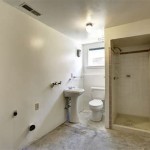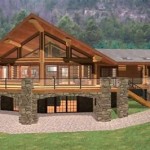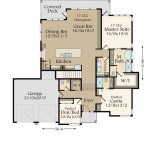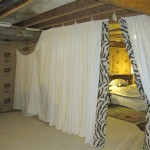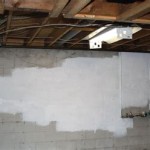Best Lights For Exposed Basement Ceiling
An exposed basement ceiling presents a unique opportunity for creative and functional lighting design. Unlike traditional finished ceilings that conceal wiring and ductwork, an exposed ceiling reveals these elements, requiring lighting solutions that complement and enhance the industrial or modern aesthetic. Selecting the right lighting fixtures involves considering factors such as the desired ambiance, the existing infrastructure, energy efficiency, and the specific functional needs of the basement space. This article explores several lighting options best suited for exposed basement ceilings, addressing their strengths, weaknesses, and optimal applications.
Track Lighting: Versatility and Focus
Track lighting systems offer a high degree of adaptability, making them a popular choice for exposed basement ceilings. These systems consist of a linear track, typically mounted directly to the ceiling joists, from which multiple light fixtures, or heads, are suspended. The heads can be adjusted to direct light where it is needed, highlighting specific areas or architectural features. This flexibility is particularly beneficial in basements with various zones, such as a workspace, a recreational area, and a storage section.
The advantages of track lighting are numerous. Firstly, the repositionable heads allow for easy customization of the lighting scheme. If the basement's layout changes or the function of a particular area evolves, the lights can be quickly adjusted without requiring extensive rewiring. Secondly, track lighting offers a range of styles and finishes, from sleek and modern to rustic and industrial, allowing homeowners to match the lighting to the overall aesthetic of the basement. Thirdly, track lighting systems are compatible with various types of bulbs, including LED, halogen, and incandescent, providing options for energy efficiency and color temperature.
However, track lighting systems also have potential drawbacks. The exposed track and wiring can sometimes appear overly utilitarian, requiring careful consideration of the fixture's design to ensure it integrates seamlessly with the exposed ceiling. Furthermore, installing track lighting may require professional assistance, especially if electrical work is involved. The cost of the system, including the track, heads, and installation, can also be higher compared to simpler lighting options.
When selecting track lighting for an exposed basement ceiling, consider the length of the track, the number of heads required, and the type of bulbs that will be used. LED bulbs are generally recommended for their energy efficiency and long lifespan. The finish of the track and heads should complement the other exposed elements in the basement, such as ductwork and pipes. For instance, a brushed nickel or black finish can create a modern industrial look, while a bronze finish can add warmth and character.
Pendant Lighting: Style and Ambiance
Pendant lights are single light fixtures suspended from the ceiling by a cord, chain, or rod. They offer a wide range of styles, from minimalist and modern to ornate and traditional, making them a versatile choice for exposed basement ceilings. Pendant lights can be used to create a focal point in a specific area, such as above a bar or a seating area, or they can be spaced evenly across the ceiling to provide general illumination.
One of the key advantages of pendant lighting is its aesthetic appeal. The variety of designs available allows homeowners to express their personal style and create a unique atmosphere in the basement. Pendant lights can also be used to add a touch of elegance and sophistication to an otherwise utilitarian space. Furthermore, pendant lights can be dimmed to create a more intimate and relaxed ambiance.
However, pendant lighting may not be the most practical option for basements with low ceilings. The suspended fixtures can reduce headroom and create a feeling of confinement. In such cases, semi-flush mount or flush mount fixtures may be a better alternative. Additionally, the installation of pendant lights may require professional assistance, especially if the existing wiring needs to be modified. The cost of pendant lights can also vary widely, depending on the style, materials, and brand.
When selecting pendant lights for an exposed basement ceiling, consider the height of the ceiling, the size of the room, and the desired ambiance. For lower ceilings, opt for smaller pendants with shorter suspensions. For larger rooms, consider using multiple pendants spaced evenly across the ceiling. The style of the pendant should complement the overall design of the basement. For instance, industrial-style pendants with exposed bulbs and metal shades can enhance the raw aesthetic of an exposed ceiling, while glass pendants can add a touch of elegance and sophistication.
Recessed Lighting: Sleek and Discreet
Recessed lighting, also known as can lights, offers a sleek and discreet lighting solution for exposed basement ceilings. These fixtures are installed directly into the ceiling joists, with only the trim visible. Recessed lighting provides general illumination without obstructing the view of the exposed ceiling elements. This type of lighting is particularly well-suited for basements with low ceilings, as it does not reduce headroom.
The primary advantage of recessed lighting is its unobtrusiveness. The fixtures blend seamlessly with the ceiling, creating a clean and uncluttered look. Recessed lighting also provides even and consistent illumination, minimizing shadows and glare. Furthermore, recessed lighting can be used in conjunction with other lighting types, such as track lighting or pendant lights, to create a layered lighting scheme.
However, recessed lighting can be more challenging to install in an exposed basement ceiling compared to other options. The fixtures need to be carefully positioned between the joists, and the wiring needs to be concealed and protected. This often requires professional assistance. Additionally, recessed lighting may not be the most energy-efficient option, especially if older incandescent bulbs are used. However, recessed LED fixtures offer significant energy savings and longer lifespans.
When selecting recessed lighting for an exposed basement ceiling, consider the type of trim, the type of bulb, and the spacing of the fixtures. The trim should match the overall aesthetic of the basement. For instance, a white trim can create a clean and modern look, while a black trim can enhance the industrial feel. LED bulbs are generally recommended for their energy efficiency and long lifespan. The spacing of the fixtures should be determined based on the size of the room and the desired level of illumination. A general rule of thumb is to space recessed lights 4-6 feet apart.
Strip Lighting: Task and Accent Illumination
Strip lighting, also known as LED tape lights or ribbon lights, provides versatile task and accent illumination for exposed basement ceilings. These flexible strips of LEDs can be easily mounted to various surfaces, including the underside of joists, creating subtle and customizable lighting effects. Strip lights are particularly useful for highlighting architectural details, illuminating workspaces, and creating ambient lighting.
One of the key advantages of strip lighting is its flexibility and ease of installation. The strips can be cut to the desired length and easily attached to surfaces using adhesive backing. Strip lighting is also highly energy-efficient, consuming very little power. Furthermore, strip lights are available in a wide range of colors, allowing homeowners to create different moods and effects.
However, strip lighting may not provide sufficient general illumination for the entire basement. It is best used in conjunction with other lighting types, such as track lighting or recessed lighting. Additionally, the adhesive backing on some strip lights may not be strong enough to hold the strip in place over time, requiring additional support. The lifespan of strip lights can also vary depending on the quality of the LEDs and the operating conditions.
When selecting strip lighting for an exposed basement ceiling, consider the color of the LEDs, the brightness of the strip, and the adhesive backing. Warm white LEDs are generally recommended for creating a cozy and inviting atmosphere, while cool white LEDs are better suited for task lighting. The brightness of the strip should be determined based on the desired level of illumination. High-quality adhesive backing is essential for ensuring that the strip stays in place. Consider using clips or brackets for added support.
Industrial Style Fixtures: Embracing the Exposed Aesthetic
For those seeking to fully embrace the raw and utilitarian aesthetic of an exposed basement ceiling, industrial-style fixtures offer a compelling option. These fixtures often feature exposed bulbs, metal cages, and vintage-inspired designs, complementing the exposed ductwork, pipes, and structural elements typically found in unfinished basements. Incorporating such fixtures can transform a purely functional space into a stylish and intentional design statement.
The primary benefit of industrial-style lighting is its inherent compatibility with exposed ceilings. These fixtures are designed to celebrate, rather than conceal, the underlying infrastructure. They often draw inspiration from factories, warehouses, and other industrial settings, imbuing the basement with a sense of history and character. Furthermore, industrial-style fixtures are typically robust and durable, designed to withstand the rigors of a potentially damp or dusty basement environment.
However, the industrial aesthetic may not appeal to everyone. Some may find the raw and utilitarian look too harsh or unrefined. Additionally, industrial-style fixtures may not provide the same level of directed light as track lighting or recessed lighting. Careful consideration should be given to the overall lighting plan to ensure that the basement is adequately illuminated for its intended use.
When selecting industrial-style fixtures for an exposed basement ceiling, consider the size of the fixture, the type of bulb, and the finish. Larger fixtures can create a dramatic focal point, while smaller fixtures can be used in clusters to provide more localized lighting. Edison bulbs, with their warm glow and visible filaments, are a popular choice for industrial-style fixtures. The finish of the fixture should complement the other exposed elements in the basement. Black, bronze, and brushed metal finishes are all common choices.
Ultimately, the best lighting for an exposed basement ceiling depends on a variety of factors, including the desired aesthetic, the functional needs of the space, and the budget. By carefully considering the strengths and weaknesses of each lighting option, homeowners can create a basement that is both functional and stylish.

The Ultimate Guide For Unfinished Basement Lighting Semigloss Design

Pin On Diy Unfinished Basement

The Ultimate Guide For Unfinished Basement Lighting Semigloss Design

10 Epic Exposed Basement Ceiling Ideas Building Bluebird

Unfinished Basement Lighting Ideas Ultimate Guide

15 Basement Ceiling Ideas To Inspire Your Space Bob Vila

29 Dazzling Exposed Basement Ceiling Ideas For Your Best Reference

Our Painted Basement Ceiling Black With Photo Examples

25 Astonishing Unfinished Basement Ideas That You Should To Apply Ceiling Decorating Low

12 Extravagant Low Ceiling Basement Lighting Ideas Lightopia
Related Posts
